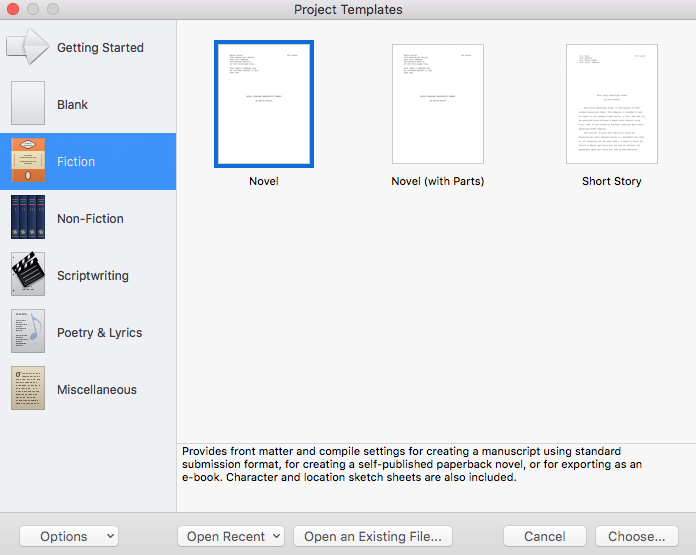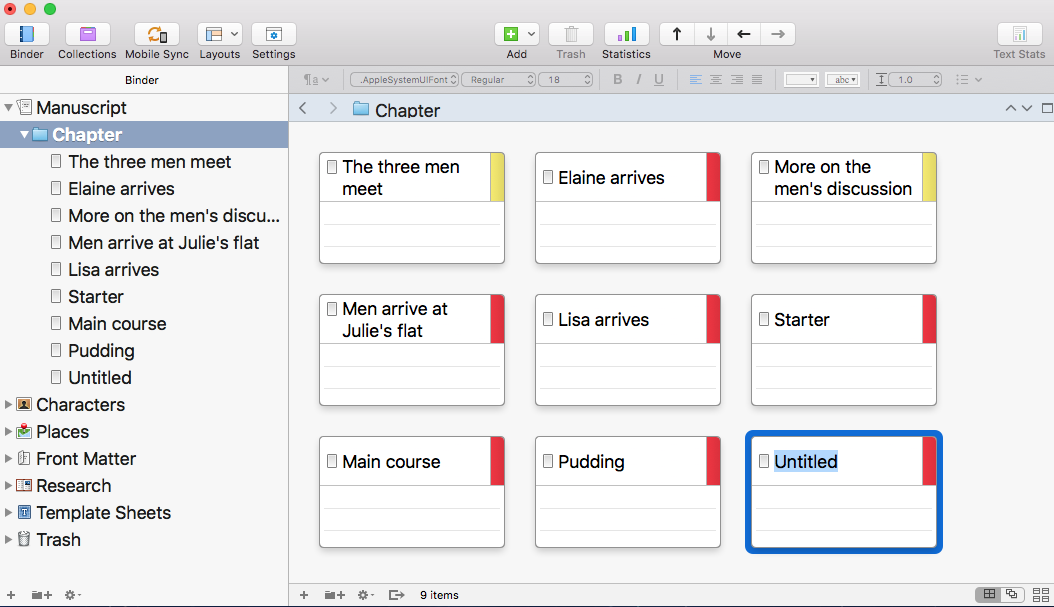NaNoWriMo2016: Outlining using the corkboard
One of the most powerful features in Scrivener is the option to use the corkboard to outline your story.
The structure of a novel
 A novel is essentially one scene after another. These scenes can be grouped into chapters and, if you want, you can group the chapters into parts.
A novel is essentially one scene after another. These scenes can be grouped into chapters and, if you want, you can group the chapters into parts.
Recall that you can opt to set up a novel with parts using the Scrivener project templates.
My LOL: Left Over Lovers doesn’t have parts – I’m not planning on it being that complicated! – and I have yet to decide which scenes will form the chapters, but I can use the corkboard to make a start on planning the outline for my story.
Using the corkboard to outline your story: one scene at a time
My definition of a scene is that it happens in one physical location, it has a fixed cast of characters and it happens in one time. So, if the action changes location, or a character enters or leaves, or there is a break in time, I start a new scene.
Here is my novel structure so far. Notice that the folder ‘Chapter’ is highlighted and that I am viewing in Corkboard mode.

To create each new card, I’m using the Add button in the top menu bar.
Whatever title I type onto the card, it appears simultaneously in the Binder.
In the next blog post, I’ll explain how I achieved the colour coding in the top-right corner of each card, and what that colouring signifies.
Simply Scrivener Specials
If you want to see me go through the process of outlining using the Corkboard or need to ask questions, book a Simply Scrivener Special.
To help me to prepare, you could also complete this short questionnaire.
The ScrivenerVirgin blog is a journey of discovery:
a step-by-step exploration of how Scrivener can change how a writer writes.
To subscribe to this blog, click here.
Also … check out the Scrivener Tips
on my ScrivenerVirgin Facebook page.


Patsy
3 October 2016 at 07:48I won’t be needing this for Nano as I’m going to ‘cheat’ and write short stories instead. (Although I’m sure you’ll tell me Sctivener could still help with that!)
rainbowmaker
3 October 2016 at 14:53You could use Scrivener for short stories. (I use it for everything!)
But, it’s most useful for much larger projects – like novels or blogging. Each to their own?